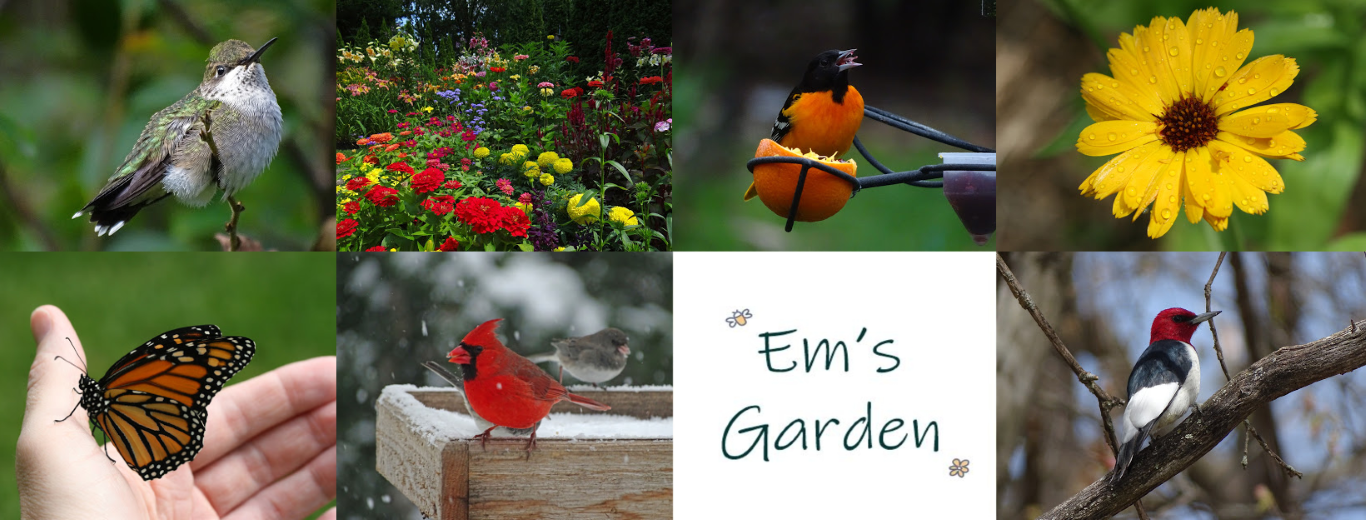Just like last winter, Cooper’s Hawks are terrorizing our neighborhood songbirds almost daily. This one isn’t even subtle about it.
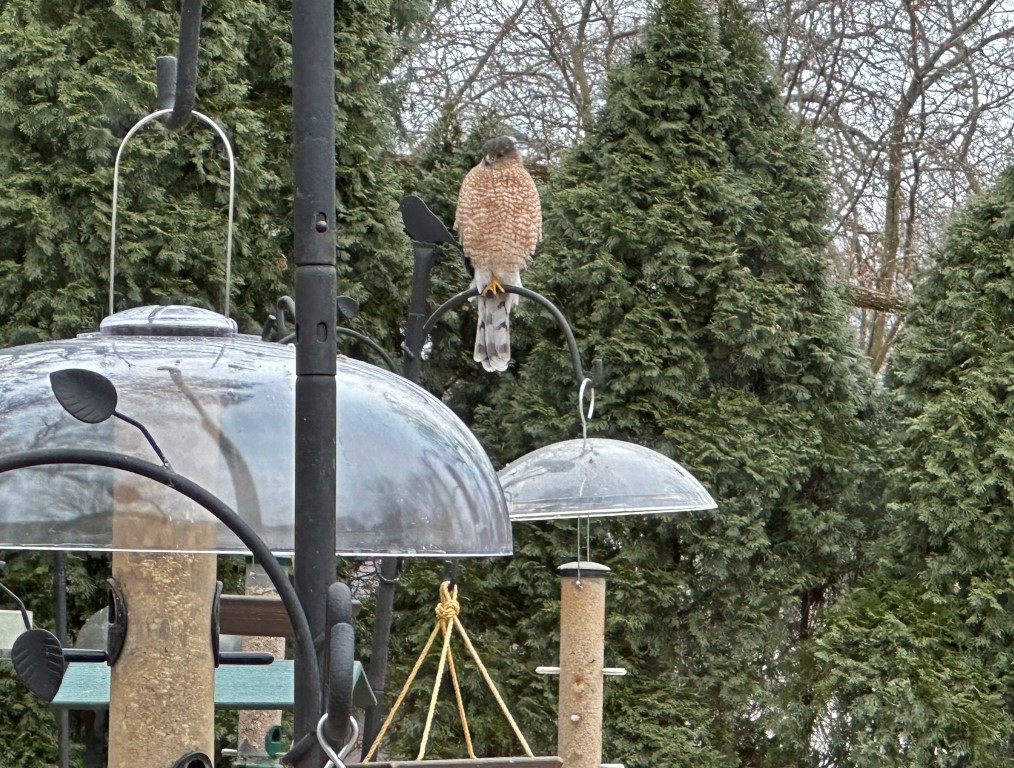
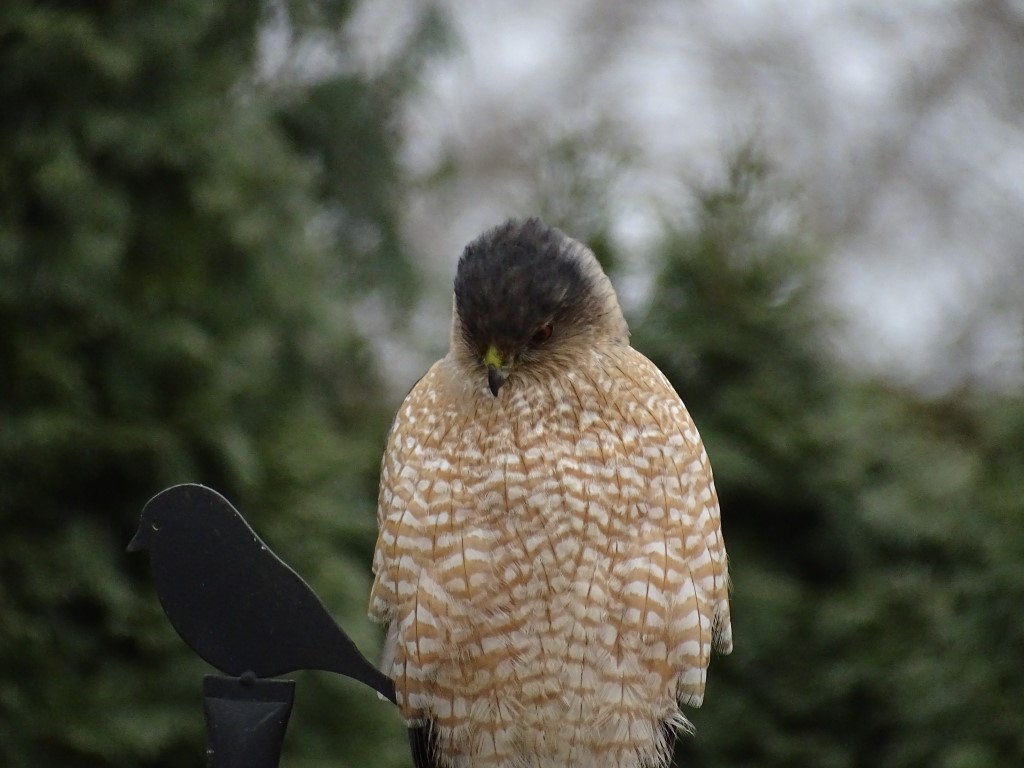
Cooper’s Hawks start nesting in late winter. Last year a pair built a nest across the street from our house, and my feeders were completely empty for days at a time.
This winter the backyard bird numbers are a bit better even though I’ve tallied Cooper’s Hawks, a Sharp-shinned Hawk, a Red-tailed Hawk and even a Bald Eagle circling low over our house over the last 30 days.
What’s different this winter?
1. Crows!
I never saw or heard a crow last winter. That has never happened in any previous winter. We’ve always had crows in our neighborhood throughout the year.
While some of their behavior can drive me crazy (like dunking animal guts in the birdbaths), crows are excellent at alerting other birds to predators. They will also team up and chase predators out of the area. I’m glad to see the bird police back in the neighborhood!
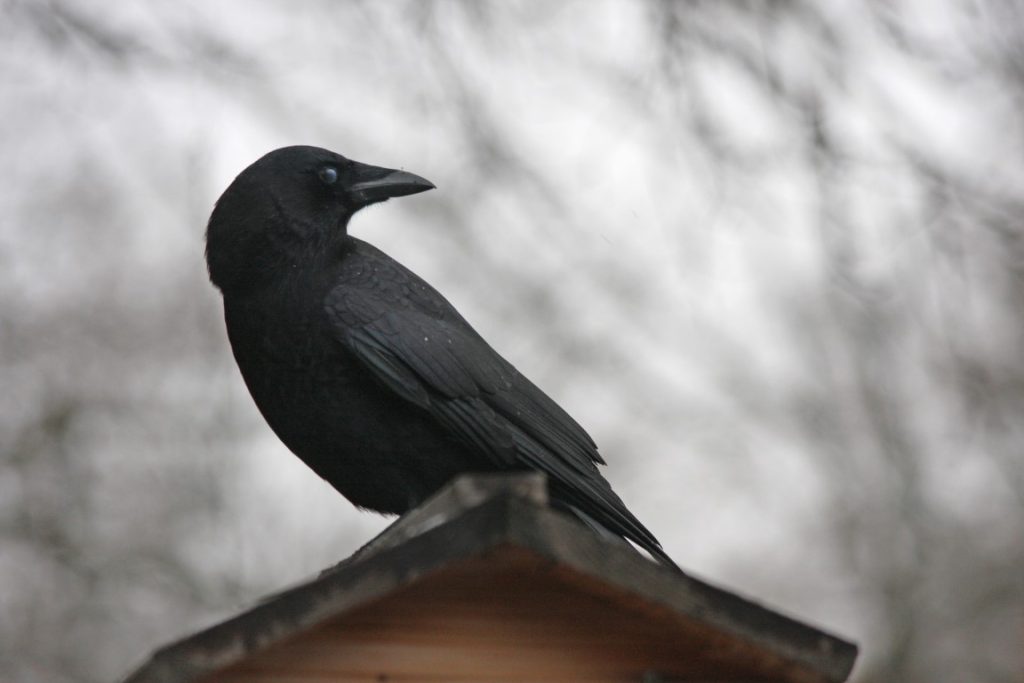
2. Feeder location
Cooper’s Hawks fly very fast. They use buildings for cover so they can launch a surprise attack.
I like setting up my feeders close to the house so I can more easily watch and photograph my backyard visitors (of course I also make sure the windows have special decals on them to prevent bird strikes). But that was putting them in more danger from hawks.
Last fall I moved several feeders into the middle of the lawn near some shrubs (but out of the reach of squirrels). That way if a hawk sweeps over our house from the other side, the birds have more time to see it and take cover.
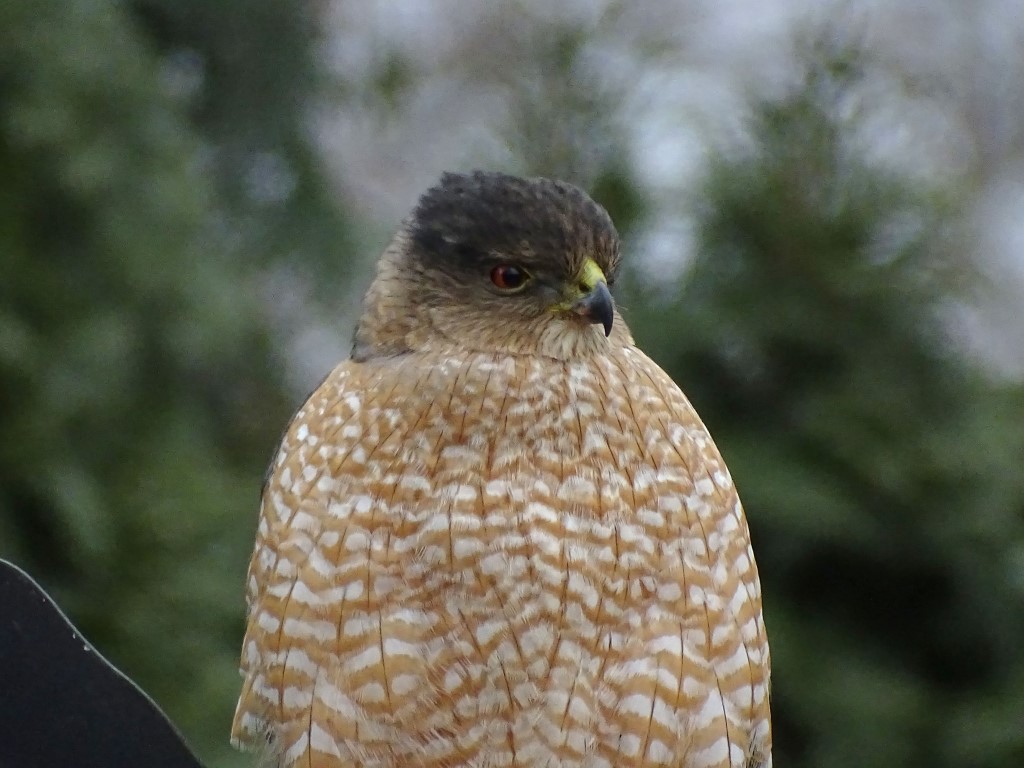
Advice I’ve seen in bird books and online suggests that you should take down your feeders for a week or more when a hawk is preying on your bird visitors. The hawk will supposedly move on. But I just read a study that found that female Cooper’s Hawks will continue to hunt in an area until the supply of food is exhausted.
In addition, my neighbors on both sides have feeders. So even if I take mine down, the hawks are probably going to keep visiting. I’d rather enjoy watching a limited number of birds, than no birds at all.
Some of the most common birds killed by Cooper’s Hawks are Northern Cardinals, Blue Jays, Mourning Doves, European Starlings and House Sparrows. I recorded 52 Mourning Doves at the feeders one day this winter, so I can see why our neighborhood is such a popular place for hawks!
Here’s an interesting fact about Cooper’s Hawks from the Cornell Lab of Ornithology:
“Dashing through vegetation to catch birds is a dangerous lifestyle. In a study of more than 300 Cooper’s Hawk skeletons, 23 percent showed old, healed-over fractures in the bones of the chest, especially of the furcula, or wishbone.”
